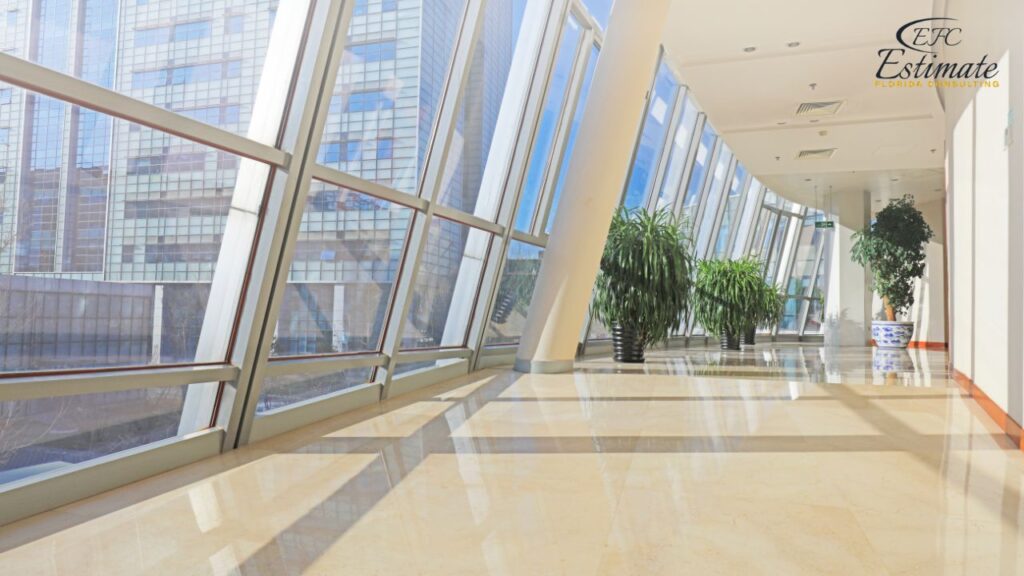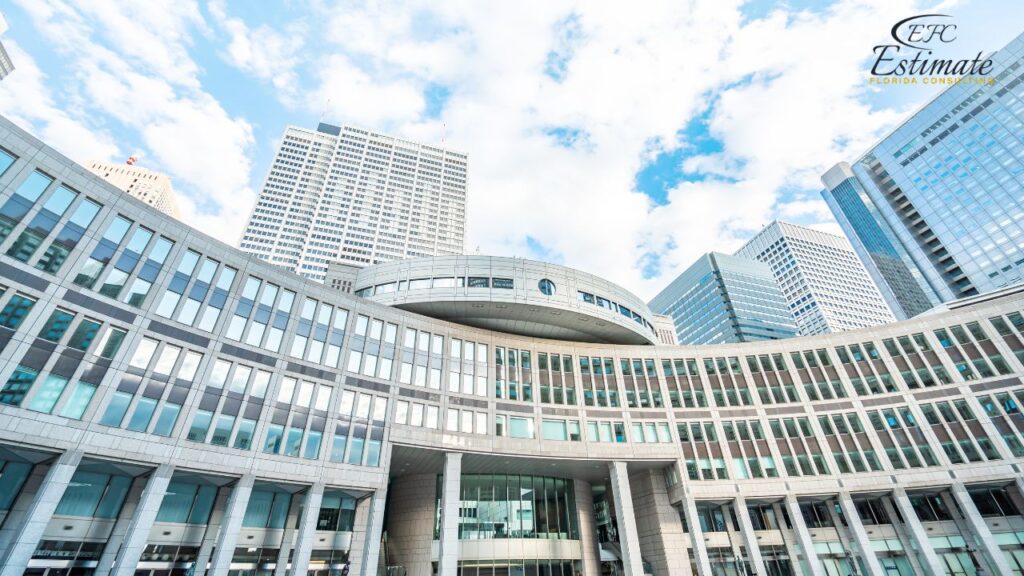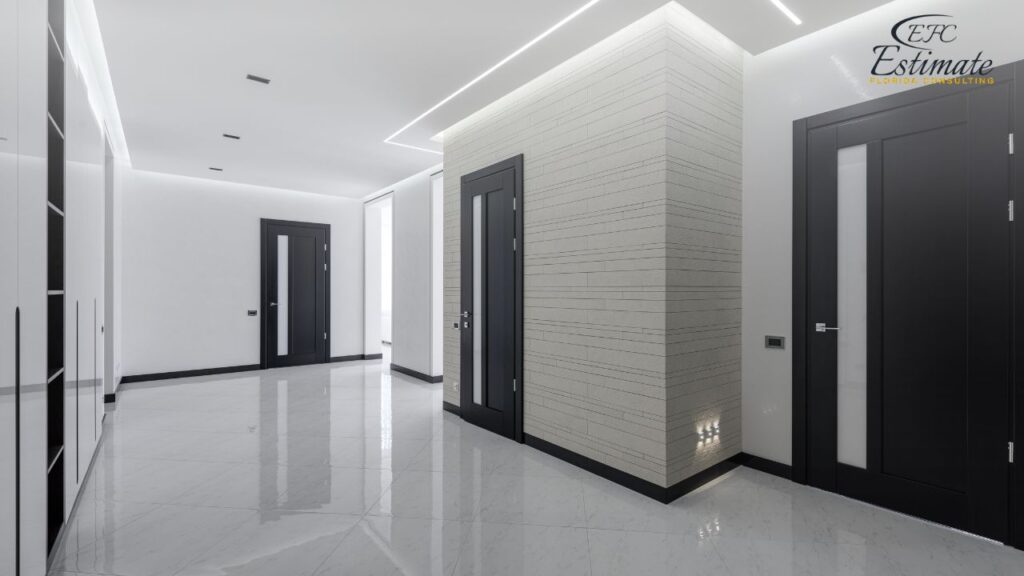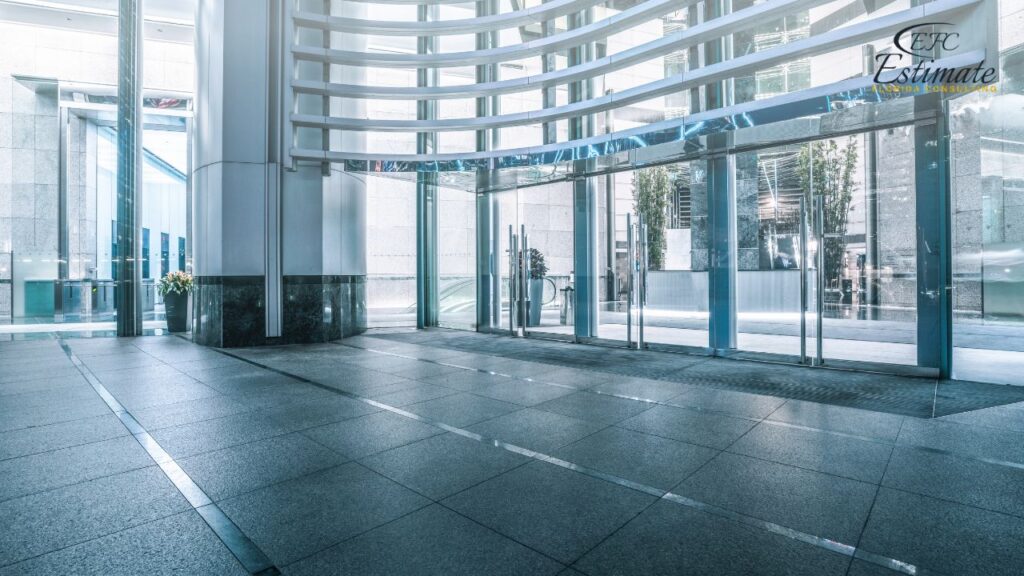Bid Confidently, Bid Successfully – Try Our Flooring Cost Estimates!
- Accurancy
- Efficiency
- Transparency
- Customization
- Time Saving
- Professionalism
- Cost Control

The landscape of flooring materials and technologies is rapidly evolving, with sustainability, durability, and cost-effectiveness at the forefront of new developments. For government building projects, where long-term value and environmental impact are critical considerations, these trends offer promising opportunities to enhance both the functionality and ecological footprint of public spaces.
The cost range for flooring replacement in government buildings can typically ranges from $7 to $30 or more per square foo.


Fully Insured License Hire Contractor For Flooring Installation
Hire Contractor
Make Informed Design Decisions Showcase Your Design Ideas
Get RenderingBamboo and cork flooring have emerged as popular choices in sustainable home design due to their rapid growth and renewable nature. Bamboo, in particular, is highly sustainable as it matures much faster than traditional hardwood trees, with some species reaching maturity in as little as three to five years. Cork, harvested from the bark of cork oak trees, is similarly renewable as the trees are not cut down during harvesting. These materials offer a warm, inviting aesthetic reminiscent of traditional hardwood flooring while boasting a lower environmental impact. Additionally, both bamboo and cork floors are known for their durability, making them long-lasting options that reduce the need for frequent replacement and further contributing to their eco-friendliness.
In recent years, there has been a notable shift towards utilizing recycled and reclaimed materials in flooring, particularly in public spaces like government buildings. Flooring crafted from recycled rubber or plastic not only reduces waste by repurposing materials that might otherwise end up in landfills but also offers robust, long-lasting performance. Reclaimed wood flooring, sourced from old buildings, barns, or even sunken logs from rivers, adds a unique character and historical charm to spaces while minimizing the demand for freshly harvested timber. This approach to flooring not only aligns with sustainability goals but also celebrates the story and heritage of the materials used, creating spaces with a sense of authenticity and environmental responsibility.
Bio-based linoleum stands out as an eco-friendly flooring option made from renewable, natural ingredients such as linseed oil, cork dust, and wood flour. Unlike synthetic alternatives, bio-based linoleum is biodegradable and does not release harmful chemicals into the environment. Its antimicrobial properties contribute to healthier indoor air quality, making it an ideal choice for spaces where cleanliness and hygiene are paramount. Furthermore, bio-based linoleum is available in a diverse array of colors and patterns, offering versatility in design while maintaining a commitment to sustainability. By opting for bio-based linoleum, homeowners and designers can create beautiful, durable floors that tread lightly on the planet, fostering spaces that prioritize both aesthetics and environmental stewardship.
The cost of replacing your flooring is significantly influenced by the chosen material. Each material entails expenses for both removal and installation, along with the material itself. The following costs represent the average expenses for the removal and replacement of each type, assuming a straightforward replacement with a newer version of the same material. These costs encompass both the material and labor for removal and installation processes.
Material | Average Replacement Costs per Sq.Ft. (Labor Included) |
Vinyl | $5.20 – $35.10 |
Concrete | $7.80 – $19.50 |
Carpet | $9.10 – $15.60 |
Hardwood | $9.10 – $19.50 |
Laminate | $10.40 – $23.40 |
Cork | $11.70 – $26.00 |
Stone | $13.00 – $97.50 |
Bamboo | $15.60 – $35.10 |
Marble | $18.20 – $84.50 |
Innovative flooring technologies have paved the way for smart flooring solutions, which are transforming the management of government buildings. By incorporating sensors and IoT connectivity into flooring materials, these smart floors can monitor foot traffic patterns, detect occupancy levels, and even track environmental conditions such as temperature and humidity. This real-time data enables building managers to optimize energy efficiency by adjusting lighting and heating systems according to occupancy and usage patterns, ultimately reducing energy consumption and operational costs.

Moreover, smart flooring enhances security measures by detecting unauthorized access or unusual activity, thereby bolstering the safety of government facilities. With their ability to seamlessly integrate with building management systems, smart flooring solutions are poised to revolutionize the way government buildings are monitored, maintained, and utilized, ushering in a new era of efficiency and sustainability.
In the pursuit of healthier indoor environments, the use of low-VOC (volatile organic compound) adhesives and finishes has become increasingly prevalent in government buildings. VOCs are chemicals that can vaporize into the air and contribute to indoor air pollution, leading to various health issues such as respiratory irritation and headaches. By opting for low-VOC products in flooring adhesives and finishes, government facilities can significantly improve indoor air quality, creating safer and more comfortable spaces for occupants and visitors. These environmentally friendly alternatives reduce the emission of harmful chemicals, mitigating the risk of adverse health effects and promoting overall well-being. As sustainability and occupant health take center stage in building design and construction, the adoption of low-VOC adhesives and finishes represents a proactive step towards creating healthier indoor environments in government buildings.
The emergence of 3D printing technology has opened up exciting possibilities in flooring design, particularly with regards to customization and sustainability. 3D printed flooring allows for the creation of intricate patterns, textures, and designs that were previously unattainable through traditional manufacturing methods. This customization capability enables government buildings to express their unique identity and aesthetic vision while also catering to specific functional requirements. Additionally, 3D printing holds promise for reducing waste in the manufacturing process through its precise and efficient production methods, minimizing material usage and optimizing resource utilization. By embracing 3D printed flooring, government facilities can not only achieve stunning visual effects but also contribute to sustainability efforts by embracing innovative technologies that redefine the boundaries of design and construction.

High-performance commercial vinyl flooring has become a go-to choice for government buildings seeking a durable and low-maintenance flooring solution. Modern vinyl flooring offers a perfect blend of affordability, durability, and aesthetic appeal. It is engineered to withstand heavy foot traffic, making it an ideal option for government facilities with high occupancy rates. Moreover, vinyl flooring is highly resistant to stains, scratches, and moisture, ensuring its longevity even in demanding environments. Its smooth surface makes cleaning and maintenance a breeze, requiring only regular sweeping and occasional mopping to keep it looking pristine. With its exceptional durability and minimal maintenance requirements, high-performance commercial vinyl flooring proves to be a cost-effective and practical choice for government buildings looking to balance performance with budgetary constraints.
Porcelain tiles are renowned for their exceptional strength, longevity, and versatility, making them a popular flooring choice for high-traffic areas in government buildings. Manufactured from dense clay fired at high temperatures, porcelain tiles exhibit superior durability and resistance to wear and tear. They are highly resistant to scratches, stains, and moisture, making them well-suited for use in areas prone to heavy use and spillage. Additionally, porcelain tiles come in a wide variety of designs, including options that mimic the appearance of natural stone or wood, allowing government facilities to achieve their desired aesthetic without compromising on performance. Whether used in lobbies, corridors, or public restrooms, porcelain tiles offer unmatched durability and timeless elegance, making them a reliable flooring solution for government buildings seeking longevity and style.
Engineered hardwood flooring provides the classic elegance of hardwood with enhanced durability and resistance to moisture damage, making it an attractive option for government buildings desiring a traditional aesthetic. Unlike solid hardwood, engineered hardwood is constructed from multiple layers of wood topped with a veneer of real hardwood, which enhances its stability and resistance to warping and expansion due to moisture.

This makes it particularly suitable for government facilities where maintaining consistent indoor environmental conditions may be challenging. Engineered hardwood is available in a wide range of wood species, finishes, and styles, allowing government buildings to achieve the desired look while benefiting from the durability and longevity of this resilient flooring option. With its blend of timeless charm and practical durability, engineered hardwood flooring remains a popular choice for government buildings seeking enduring beauty and performance.
Evaluating the initial investment against the long-term savings in maintenance and replacement costs is crucial. Lifecycle assessment models can help decision-makers choose flooring materials that, while perhaps more expensive upfront, offer greater durability and lower environmental impact over their lifetime.
Receive highly accurate estimates tailored to your zip code, giving you the edge to secure more projects. Upload your plans and start winning!
Selecting the right flooring material for government projects is a complex decision that requires balancing upfront costs with long-term benefits. This analysis compares traditional materials like hardwood and carpet with modern alternatives such as luxury vinyl tile (LVT) and recycled rubber, focusing on costs, maintenance, durability, and environmental impact.

In conclusion, the dynamic landscape of flooring materials presents promising opportunities for enhancing government buildings with sustainable, durable, and cost-effective solutions. By carefully considering factors such as initial costs, maintenance requirements, durability, and environmental impact, decision-makers can select flooring options that not only meet functional and aesthetic needs but also contribute to long-term value and environmental stewardship. With an array of innovative materials and technologies available, government projects can embrace flooring solutions that prioritize both efficiency and sustainability, creating spaces that are resilient, visually appealing, and environmentally responsible.
The cost of flooring replacement in government buildings can vary depending on factors such as the size of the building, chosen materials (basic vinyl, mid-range hardwood, etc.), labor expenses, removal of old flooring, subfloor preparation, and compliance with government regulations.
Sustainable flooring materials like bamboo and cork are gaining popularity due to their rapid growth, renewable nature, durability, and lower environmental impact compared to traditional hardwood. These materials offer a warm aesthetic reminiscent of hardwood while contributing to eco-friendliness.
Smart flooring solutions incorporate sensors and IoT connectivity to monitor foot traffic, detect occupancy levels, and track environmental conditions. This real-time data enables optimized energy efficiency, enhanced security measures, and streamlined building management, ultimately reducing energy consumption and operational costs.
Low-VOC (volatile organic compound) adhesives and finishes emit fewer harmful chemicals into the air, thereby improving indoor air quality and creating safer and more comfortable spaces for occupants and visitors. Their use aligns with sustainability goals and promotes overall well-being in government buildings.
Lifecycle assessment models help decision-makers evaluate the initial investment against long-term savings in maintenance and replacement costs, as well as environmental impact. By considering factors such as costs, maintenance requirements, durability, and environmental impact, these models assist in choosing flooring options that offer greater sustainability and value over their lifetime.
Here I am going to share some steps to get your flooring replacement cost for Government Buildings estimate report.
You can send us your plan on info@estimatorflorida.com
Before starting your project, we send you a quote for your service. That quote will have detailed information about your project. Here you will get information about the size, difficulty, complexity and bid date when determining pricing.
Our team will takeoff and estimate your project. When we deliver you’ll receive a PDF and an Excel file of your estimate. We can also offer construction lead generation services for the jobs you’d like to pursue further.



561-530-2845
info@estimatorflorida.com
Address
5245 Wiles Rd Apt 3-102 St. Pete Beach, FL 33073 United States
561-530-2845
info@estimatorflorida.com
Address
5245 Wiles Rd Apt 3-102 St. Pete Beach, FL 33073 United States
All copyright © Reserved | Designed By V Marketing Media | Disclaimer